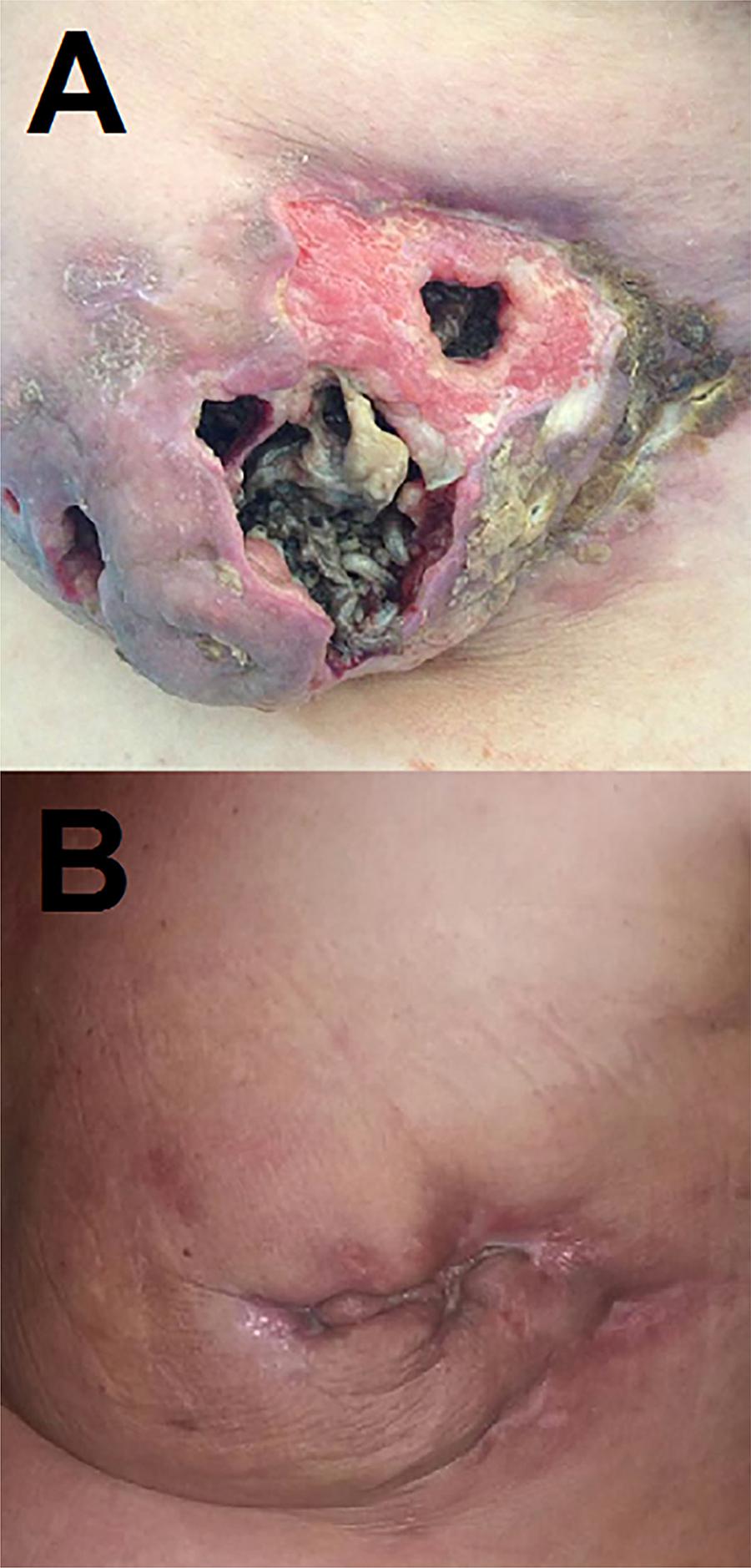ABSTRACT
Most breast cancers originate in the ductal epithelium and are referred to as invasive ductal carcinoma. In this study we report on the clinical procedures adopted to diagnose myiasis in association with infiltrating metastatic breast carcinoma in a female patient. A 41 years old woman came to the Federal Hospital of Andaraí complaining of intense itching, warmth, redness and hardening of the breast, which had acquired the aspect of an orange peel. A lesion in the left breast was cavitated, dimpled, had fetid odor, and had fibrotic and infected air nodules filled with exudate and Dipteran larvae. The tissue was cleaned and 33 larvae were extracted. The patient was hospitalized and received Ivermectin. Eighteen of the larvae extracted from the patient were placed in 70% alcohol, and twelve were placed in a container with sterile wood shavings under controlled conditions until they metamorphosed into adults. The taxonomic identification of the flies revealed that the culprit was Cochliomyia hominivorax. A histopathological exam conducted three months earlier had revealed infiltrating ductal carcinoma. Two months after the myiasis treatment, the breast tissue had healed. The patient had waited ten days from the onset of the myiasis to seek treatment, and that delay interfered negatively in the prognosis of both the neoplasm and the myiasis. This study is relevant to public health in view of the strong social impact of myiasis.
Myiasis; Breast cancer; Cochliomyia hominivorax; Neoplasic wounds


